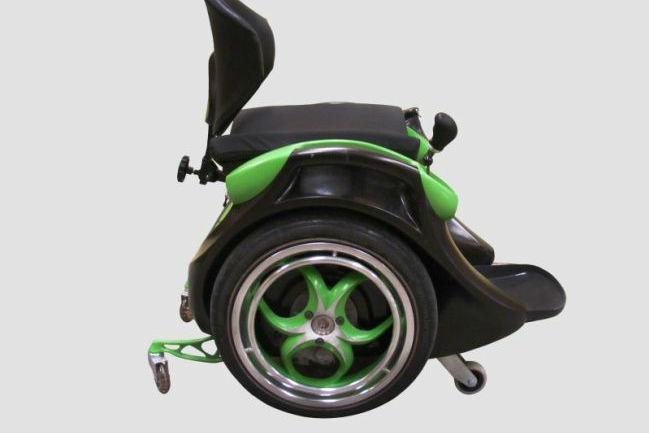
Designed by New Zealand-based inventor Kevin Halsall, the Ogo is a unique hands-free wheelchair that stands upright on just two wheels. Much like a Segway, it’s equipped with an array of different sensors that pick up on the rider’s motion and translate it into directional movement. If the user leans forward forward, for example, the internal motion sensors instantaneously recognize the movement and relay it to the Ogo’s motor, which then propels the wheelchair forward.

It’s still just a prototype at this point, but based on the short video of Halsall riding Ogo around his workshop, it appears to be pretty damn advanced. By doing little more than shifting his upper body a bit, he’s able to execute extremely precise turns and navigate narrow passages with ease. He doesn’t take it anywhere off-road, but apparently the machine’s wide tires also allow it to roll over tough terrain that would be problematic for traditional wheelchairs.
The Ogo isn’t quite ready for prime time just yet, but it is a finalist in the Innovate Awards for New Zealand, and has already gained attention from a number of private investors. Keep your fingers crossed, and we might just see Ogo hit the streets in a few years time.



